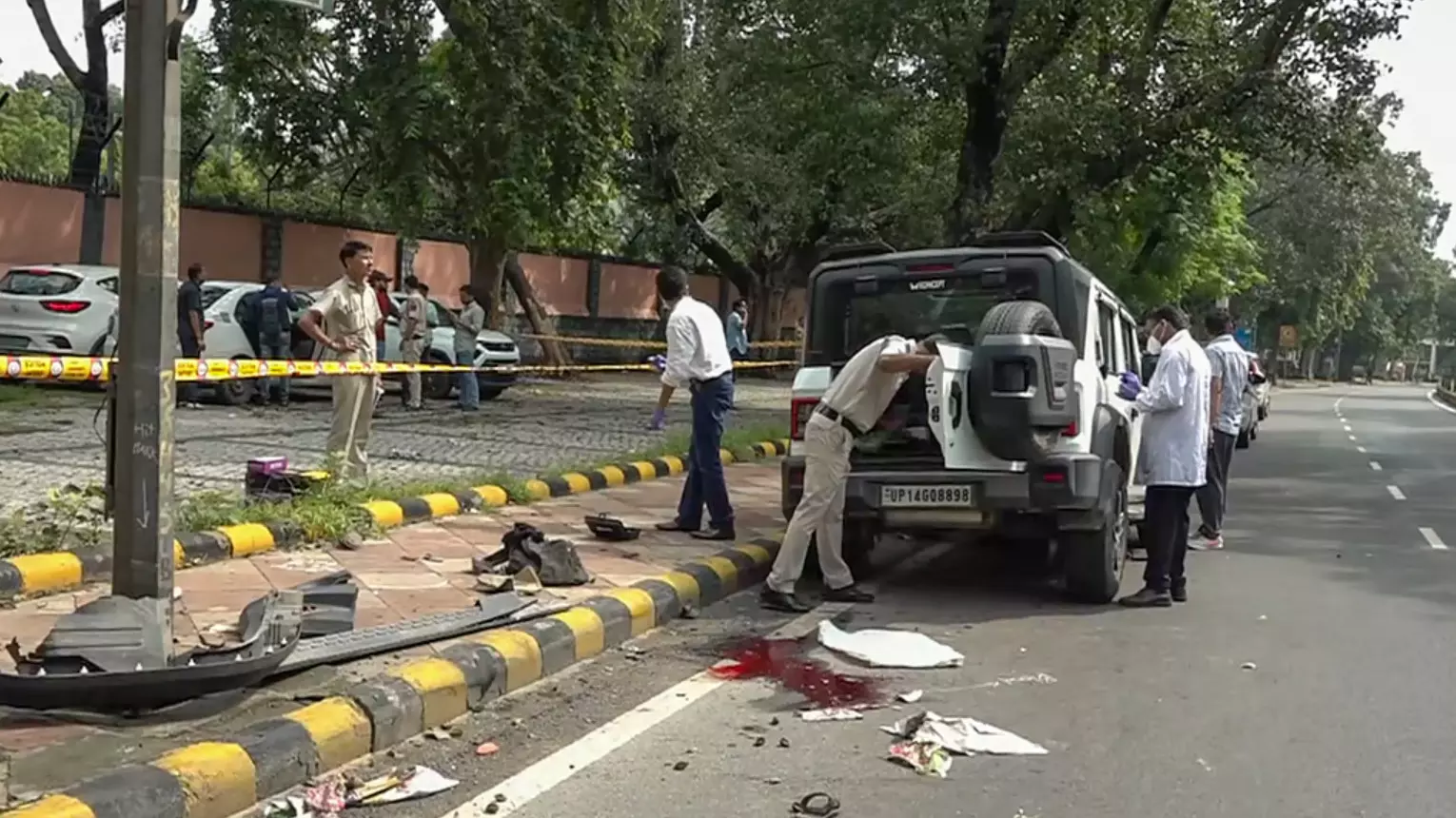From Beast to Brute
Mahindra’s Thar and Roxx are great SUVs, but in the hands of many young, rash and wannabe drivers in India, these vehicles are fast adopting a bestial persona

“Patience is something that
you admire in the driver
behind you and scorn in the
one who is ahead of you.”
— Mac McCleary
Mahindra’s Thar and five-door Roxx are great SUVs. I have owned the former and enjoyed its rugged charm and road presence. But a pattern is emerging. In the hands of some young, brash and wannabe drivers, these SUVs are adopting a bestial persona. Instances of Thar- and Roxx-owners menacing, attacking and deliberately running over road-users are increasing. This is not negligence, it is conscious cruelty. Social media is overflowing with videos of Thars running amok on India’s streets, typically with a disastrous outcome for others. A Thar Roxx allegedly loaded with narcotics ran over pedestrians in New Delhi’s Chanakyapuri recently, killing one and injuring another. A Thar deliberately reverse ran an elderly scooterist in Jammu and sent him to the ICU. Yes, SUVs are fast becoming a symbol of terror.
I offer my apologies in advance to both Mahindra Auto and saner Thar-owners, lest they misconstrue my intentions. I am personally car-crazy, and the Thar and Roxx are great—robust, commanding and capable of conquering any terrain. The problem stems from rash owners and drivers, who fancy themselves to be as indestructible and gifted as the vehicles. The only fault we can perhaps lay at Mahindra’s doorstep is that it has not realized yet that the average wannabe Indian is incapable of handling its built-tough SUVs. A jest parallel would be alcoholic beverage companies, which have never truly tried to get Indians to chug down beer or other spirits at sports events. It may be because alcobev firms realize that if they do, the shenanigans in the stands would overshadow the match-up on the playing ground. India is just not ready—not for good alcohol, and certainly not for good cars.
Descent Into Brutality
Back to the Thar and other SUVs, it is difficult to understand or forgive the descent into brutality when some get behind the wheel. It is scary too, as is the saving grace that this ruthlessness is not limited to India. That being said, it would be nice if top SUV-makers would reach out to owners of large vehicles of all brands, seeking their better sense and civility while driving. Coming from people of the stature of Anand Mahindra, universally celebrated for his vision, professionalism and propriety, it could bring about a change in the driving behaviour of even the most thick-headed behind-the-wheel lunatics.
Back to the story… While the Jammu hit and run saw a scooterist end up in the ICU and shocked the nation (given its viral CCTV footage), the Chanakyapuri incident was bizarre as it underlined the deadly collision of criminal enterprise and unhinged driving. There are countless other parallels. In one, a petty Instagram spat in Noida turned vicious when a Thar belonging to an alleged mafia member was used as a battering ram to run down a person, the road-rage captured in a horrifying viral video. Gurgaon wasn’t to be left behind, as videos of a Thar surfaced, repeatedly ramming brother Scorpio on a crowded public road. The Scorpio driver tried to flee, but was boxed in and battered.
In Chandigarh, a Thar rammed three parked vehicles in a crowded area with no apparent provocation. In Ahmedabad, a road-user recalled a Thar relentlessly tailgating and flashing its high beam, cutting across lanes as if it was playing kabaddi in real life, using sheer might to squeeze and scare everyone off. Another driver who was blocked aggressively, honked at and threatened, barely escaped by driving to a police vehicle parked nearby. Asked about the incident, he called it “bone chilling”.
These voices, unfiltered and raw, reveal a collective perception—the behaviour of many SUV-owners on India’s roads isn’t just reckless, it is predatory.
Ego Fuels the Machine
SUVs offer enormous road presence. Thus, for young, status seeking drivers, they become a tool of dominance. “The macho branding of SUVs feeds the fantasy of many, particularly those who may not be very manly in real life,” says a psychologist. Macabre lighter note notwithstanding, the truth is that many incidents involve privileged individuals such as children of top politicians or rich businessmen and students of elite institutions, ‘special people’ armoured by a misplaced sense of immunity. When such a romance happens, aggression is soon married to impunity. This happened in the Jammu incident, which saw the accused flee after his vehicle was seized. But the daring, mindless violence suggests his ingrained belief that consequences were unlikely.
Peer pressure and social media validation can also be deadly, especially when the Internet glamourizes such behaviour. More often than not, videos of SUVs performing crazy manoeuvres, being involved in instances of road rage or simply terrorizing others for fun win likes, shares and cheers of ‘Alpha’. Viral notoriety becomes a twisted reward in some cases, reinforcing the impulse to perform even greater deeds of ‘bravado’. In the race to outperform fellow stuntmen and ‘Alphas’, the aspired-for bravado often crosses the line into foolhardiness and madness.
There are global parallels galore, with aggressive driving seen in most world cities. India may have the dubious distinction of leading in SUV related horror, but other nations also see similar brutal road rage. For one, a former Brazilian judge, drunk and with a woman on his lap, hit and killed a comedian (Thaís Bonatti) instantly. The tragedy was not gangster SUV fuelled, but reflected chutzpah and intoxicated aggression behind the wheel. Around the world, large vehicles, high speeds and fragile egos combine to create lethal behaviour. India does add its own toxic mix—a culture still grappling with road safety, limited enforcement and a societal acceptance of aggression.
Masculinity Crisis on Wheels
Without any intent of sounding Freudian, I will, because Indian roads amplify gendered aggression (and because a horde of psychologists agree). ‘Small man’ energy, some say, is being thrown around like a physical whack on the roads, using steel and horsepower as weapons. When this happens, SUVs become extensions of fragile masculinity crying out for validation. Another reason is that despite strict laws, enforcement is weak. Many perpetrators, even after causing grievous harm, escape with minimal charges or fines. A social media post lamented how even when the police arrest people, fines are laughable, driving licenses are not revoked and behaviour not adequately punished.
Worse, there is a cultural normalization of road rage, especially in India. Violent events don’t shock us anymore, they trend. By now, road rage should have become a national conversation with a definitive and final conclusion, but it is still being shrugged off as a punchline until someone is hurt or killed.
Be clear. This is not about vehicles, it is about societal values. We need to have the sensibility and courage to rein in actions that glorify so-called machismo and male dominance. We have to strengthen enforcement with penalties, license suspensions and severe consequences. We need to mandate psychometric screening and driver education. We need campaigns that punish violence by shaming it, not idolizing it.
At the end of the day, a machine is neither noble nor ignoble, it only reflects its driver. The Thar and Roxx are fine in themselves; they are powerful, dependable and fun, especially off-road. But too many brash drivers are turning them into a weapon. The recent spike in violent incidents—threatening, assaulting, running over, even ramming others deliberately—shows a terrifying cultivation of road rage, cruelty and impunity. This is not small-town aggression. It is a beast unleashed in metros, broadcast on screens and normalized in everyday horror. We cannot afford this. If we fail to punish errant drivers and continue to reward their cruelty with likes, clicks, headlines and Alphas, we will reach a point where we don’t mourn victims anymore, only await them. The road is not a jungle.
The writer is a veteran journalist and communications specialist. He can be reached on [email protected]. Views expressed are personal



